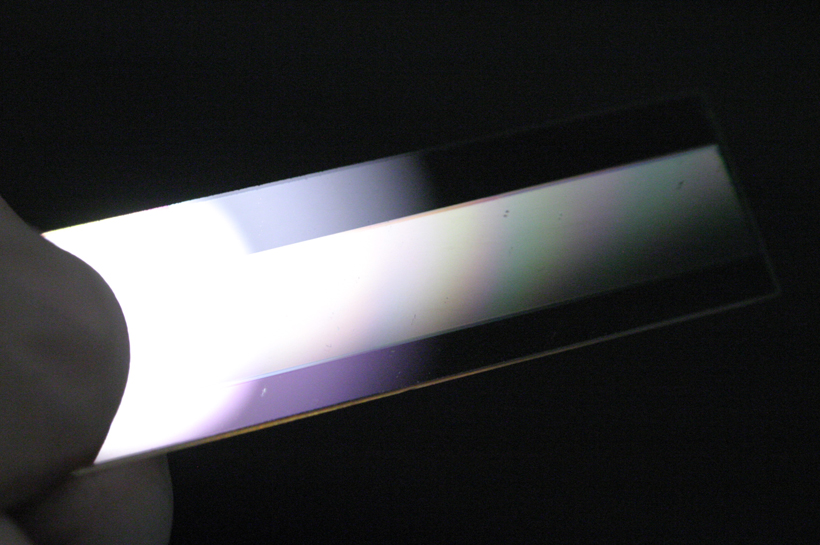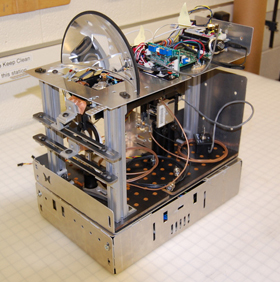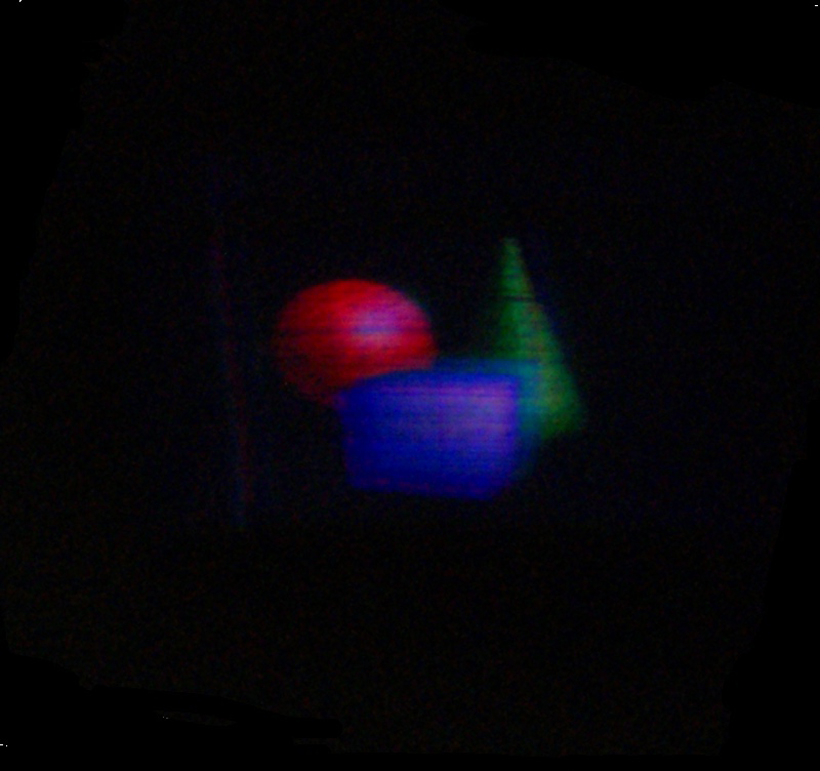Using surface acoustic waves to control light's angle and color composition, BYU and MIT researchers open door to inexpensive holographic video displays
From the Journal: Review of Scientific Instruments
WASHINGTON D.C., February 3, 2015 — Holographic video displays, featuring three-dimensional images, are about to “go large” and become a lot more affordable at the same time, thanks to the work of a team of Brigham Young University (BYU) researchers and their collaborators at Massachusetts Institute of Technology (MIT).

It’s all about manipulating light. Three of the primary methods include: reflection, refraction and diffraction. In this case, diffraction is the key, and essentially enables lines — almost any type — to bend and filter light.
In the journal Review of Scientific Instruments, from AIP Publishing, the team reports using surface acoustic waves as a dynamic pattern of lines to control light’s angle and color composition.
How does it work? The magic happens on the surface of a special crystal called lithium niobate (LiNbO3), which boasts excellent optical properties. Beneath the surface of the LiNbO3, microscopic channels, or “waveguides,” are created to confine light passing through. A metal electrode is then deposited onto each waveguide, which can produce surface acoustic waves.
 The resulting frequency division of color enables a new type of color display. This means that “for a wavelength display, we don’t need to rely on color filter wheels or dedicated red and blue pixels,” explained Daniel E. Smalley, assistant professor of electrical engineering at BYU, who first reported an advance in this realm in Nature in 2013, while he was a graduate student working at MIT with his advisor V. Michael Bove.
The resulting frequency division of color enables a new type of color display. This means that “for a wavelength display, we don’t need to rely on color filter wheels or dedicated red and blue pixels,” explained Daniel E. Smalley, assistant professor of electrical engineering at BYU, who first reported an advance in this realm in Nature in 2013, while he was a graduate student working at MIT with his advisor V. Michael Bove.
Instead of a color wheel, any color combination is possible with their approach simply by altering the frequency of the signal sent to the “white waveguide pixel.” In other words, Smalley said, “we can color the output of our display by ‘coloring’ the frequencies of the drive signal.”
“As a bonus, this interaction also rotates the polarization of the signal light so that we can use a polarizer to eliminate any noise in the system,” he added.
In terms of applications, the team’s technology adapts and combines techniques from telecom and integrated optics in a way that makes it much less expensive than previous approaches. “We can use this technology to make simple and inexpensive color waveguide displays — including inexpensive holographic video displays,” Smalley pointed out. “This can drop the cost of a holographic video display from tens of thousands of dollars to less than a thousand.”
Holograms are meant to be large. Now that there’s a simple and inexpensive color display technology, Smalley and colleagues are working on ways to use it to create large holographic video displays — on the scale of room-sized displays.

###
For More Information:
Jason Socrates Bardi
+1 240-535-4954
jbardi@aip.org
@jasonbardi
Article Title
Frequency division color characterization apparatus for anisotropic leaky mode light modulators
Authors
Andre Henrie, Benjamin Haymore, and Daniel E. Smalley
Author Affiliations
Brigham Young University and Massachusetts Institute of Technology
